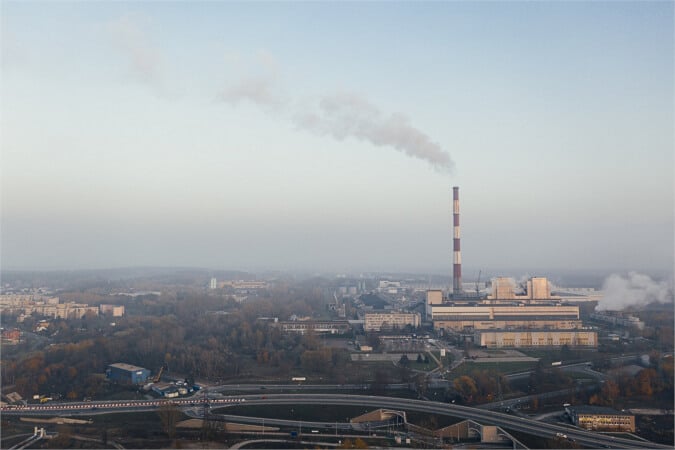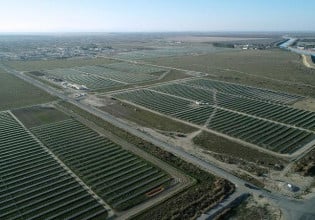A Green Future for Nuclear?
With the transition away from fossil fuels, nuclear power could emerge as a low-carbon power source.
Georgia Power’s Vogtle Unit 3 nuclear reactor has reached its initial criticality. In other words, operators have established sustained nuclear fission inside the reactor for the first time. This initial splitting of atoms is the first step in creating the heat that will produce steam to turn the generators that will produce electricity.

Vogtle Unit 3. Image used courtesy of Georgia Power
Long Nucler Road For Georgia
It has been a long road for the first new reactors to receive approval in more than 30 years. Construction on Unit 3 and Unit 4 began in 2009, with approval coming In February 2012, when the U.S. Nuclear Regulatory Commission (NRC) approved the application to build and operate two new reactors, Units 3 and 4, at its Vogtle plant near Augusta in Georgia. The cost was set initially at $14 billion, and the reactors were supposed to begin operation in 2016.
Costs have now exceeded $34 billion, and the first of the two new reactors is expected to go online at the end of this year. The Vogtle plant reactors are the only two commercial reactors currently under construction in the U.S.
Early Nuclear Power Promises
Generation of electricity from nuclear power began in 1958, not long after Lewis L. Strauss, chairman of the U.S. Atomic Energy Commission, told the National Association of Science Writers in New York in 1954 that nuclear electricity would be “too cheap to meter.”
Since then, the promise of nearly unlimited electrical power from nuclear fission has been tempered by three major nuclear disasters: Three Mile Island in the U.S. in 1979, Chornobyl in Ukraine in 1986, and Fukushima in Japan in 2011.
By the end of 2021, there were 93 operating commercial reactors in the U.S. located in 28 states. The oldest of these (Nine Mile Point Unit 1 in New York) is more than 50 years old, and the average fleet is 40 years old. The newest reactor (Watts Bar Unit 2 in Tennessee) came online in 2016. The nuclear share of total electricity generation in the U.S. is about 19 percent.
Startup testing at Vogtle Unit 3 demonstrates the operation of the primary cooling system and steam supply for the generators and pressure integrity with the uranium fuel inside the reactor. Having established a continuing fission reaction, the operators will gradually raise power levels, ultimately reaching 100 percent.
The power produced by the generators will be synchronized to the electric power grid as the reactor comes online, producing as much as 2200 megawatts of electrical power when both Unit 3 and Unit 4 are online. The two new units are expected to power more than 500,000 homes and businesses.
Is Nuclear Energy Green?
As the country transitions away from greenhouse gas (GHG) producing fossil fuels (coal and oil), nuclear power is expected to join renewables like wind and solar as a low-carbon power source. Although manufacturing and transporting solar panels and wind turbines results in the emission of some GHGs, they produce much less than the initial construction of a nuclear power plant and the mining and processing of uranium nuclear fuel, and the treatment and storage of spent uranium fuel. Nuclear power plants must be decommissioned at the end of their useful life, also contributing to atmospheric climate change.

Greenhouse gas emissions. Image used courtesy of Pixabay
In 2008, a study was published in Energy Policy titled “Valuing the Greenhouse Gas Emissions from Nuclear Power: A Critical Survey.” The study analyzed more than 100 earlier works to determine the best estimate of the emissions of nuclear power plants. Over the lifetime of a nuclear plant, it produces approximately 66 grams of carbon dioxide per kilowatt-hour of electricity produced. This compares to wind power (10 grams per kilowatt-hour), solar (13 grams per kilowatt-hour), and hydroelectric power (13 grams per kilowatt-hour). For comparison, natural gas, touted as a “clean” fuel, produces 443 grams per kilowatt-hour, and coal produces up to 1,050 grams of CO2 per kilowatt-hour.
If its lifetime CO2 emissions aren’t enough to question its future, the disposal of spent uranium fuel poses problems that have not been easily solved. Currently, most used fuel is stored on-site next to working nuclear reactors, but eventually, a long-term (more than 1,000 years) storage solution needs to be found. Critics of nuclear energy also point out that the dominant design currently in commercial use dates back to the 1950s.
If nuclear energy is to continue to be a part of low-carbon energy solutions, the almost aged-out fleet of reactors currently in operation in the U.S. will need to be replaced—hopefully with more modern and efficient designs—and a long-term solution to what to do with spent fuel must be found. Unless these tasks are accomplished, nuclear power plants will slowly end their lives and be decommissioned, with Vogtle Unit 3 and Unit 4 in Georgia likely the last to go.






